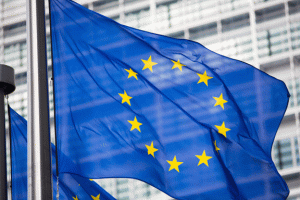Europe Embraces Tariff Barriers in Response to Rising Imports
They call it the law of unintended consequences and, broadly speaking, it was intended by the American sociologist Robert K. Merton to mean unintended consequences are outcomes that are not the ones foreseen and intended by a purposeful action — particularly actions of a government.
Need buying strategies for steel? Request your two-month free trial of MetalMiner’s Outlook
Well, I don’t for one minute expect President Donald Trump gave much thought to the consequences for the rest of the world of his decision last year to slap 25% import tariffs on steel products from the rest of the world.
His focus was largely on a domestic audience and if he gave thought at all for the international consequences, it was probably the impact on China. Although steel imports into the U.S. from China were not as large as from suppliers like Russia, Ukraine, Brazil and Canada, the cumulative impact of deterring those suppliers from the U.S. market has been an increase in metal looking for a home in Europe.
The E.U. imposed a number of policies in response to the perceived threat of increased steel imports. One was to demand that most steel (and aluminum) imports into the E.U. apply for a form of licence, called Prior Surveillance. The measure is not designed to control imports as much as to monitor the precise origin, down to the level of manufacturer, probably with the intention of applying quotas or anti-dumping action at the manufacturer level at some stage in the near future.
But in the meantime, the E.U. feels it needs more of a blanket approach. As such, the European Commission has announced it will prolong until July 16, 2021, a 25% tariff on more than 20 types of steel ranging from stainless hot-rolled and cold-rolled sheets to rebars and railway material when the shipments exceed the average over the past three years.
According to the Gulf Times, 26 types of steel will be covered by the E.U.’s definitive measures, compared with 23 product categories under the provisional system and 28 within the scope of the original probe representing some 40% of the E.U.’s annual iron and steel imports.
The E.U.’s decision has not been met with universal approval. The decision was immensely popular among steel producers who pushed for the measures; however, consumers like the automotive sector called the move unhelpful and a cause of “regret,” according to S&P Global.
The European Automobile Manufacturers’ Association (ACEA) was quoted as saying “ACEA questions the need for such trade protectionist measures. In the automotive sector, access to EU steel production is extremely tight and imports remain necessary to fill supply-chain gaps.”
ACEA points out any increase in imports is down to increased consumption, not increased market penetration by overseas mills, saying “Motor vehicle manufacturing has increased by 5 million units per year since 2014, and some increase in steel imports has been necessary to meet this higher demand.”
MetalMiner’s Annual Outlook provides 2019 buying strategies for carbon steel
It would seem U.S. carmakers and the wider steel-consuming industry are not alone in facing higher prices going into 2019.
As GDP growth slows — recent data shows it is certainly slowing in Europe and China — manufacturers’ factory gate prices will come under pressure as this translates into lower sales. Heightened raw material inputs will therefore squeeze margins in the year ahead.



Leave a Reply